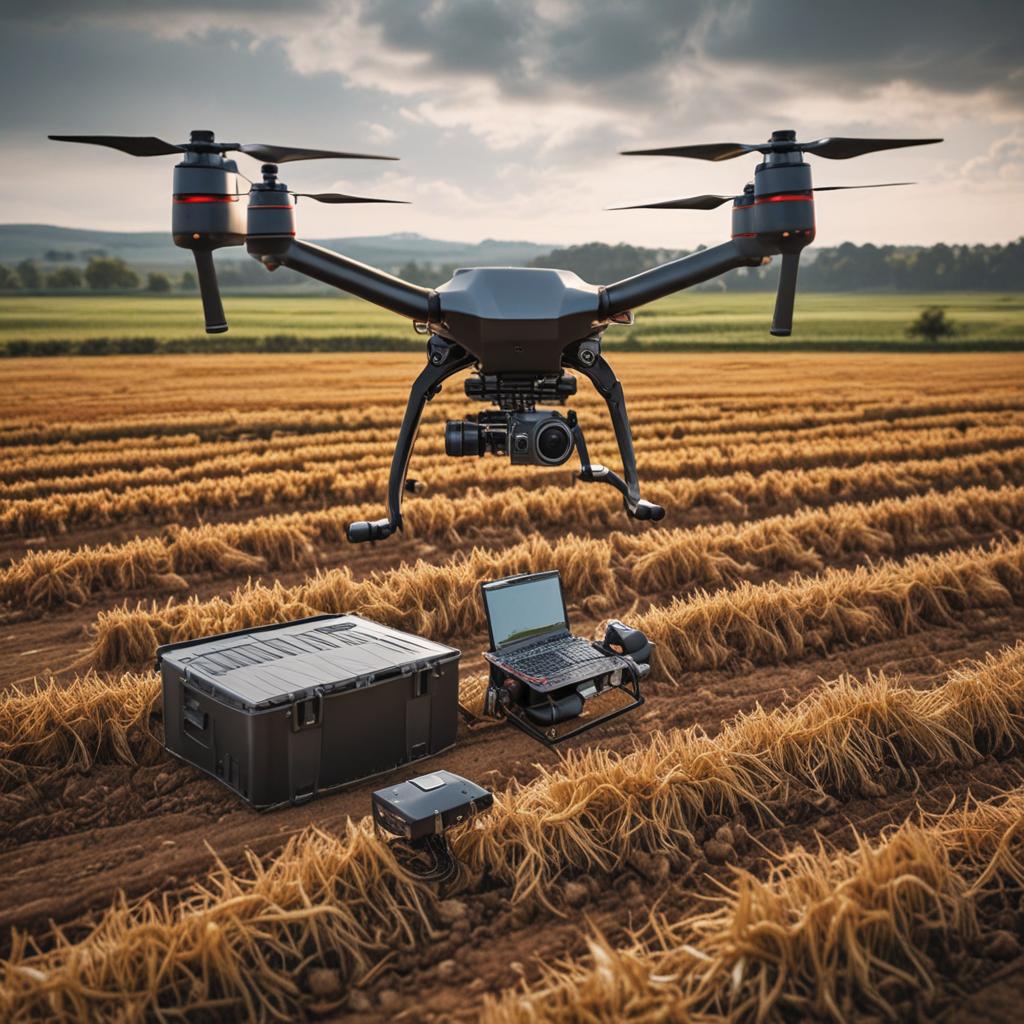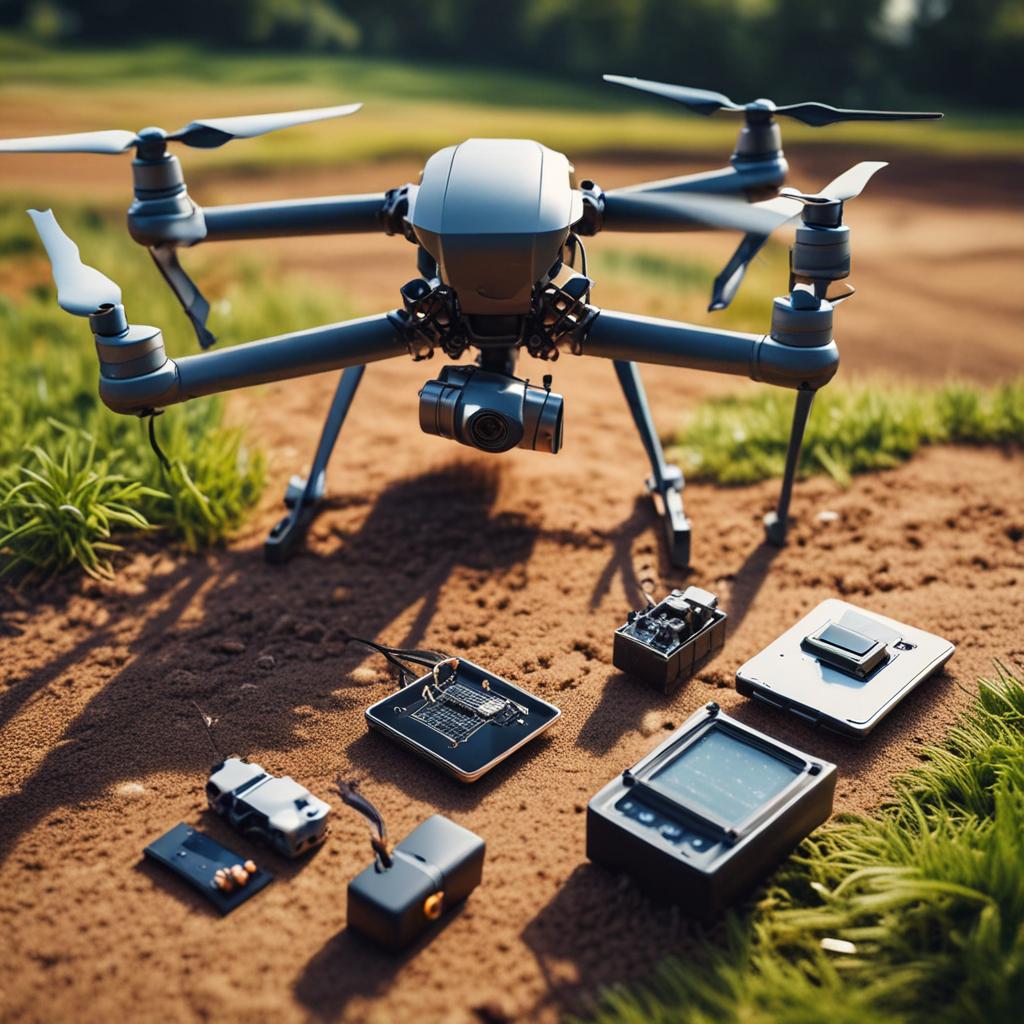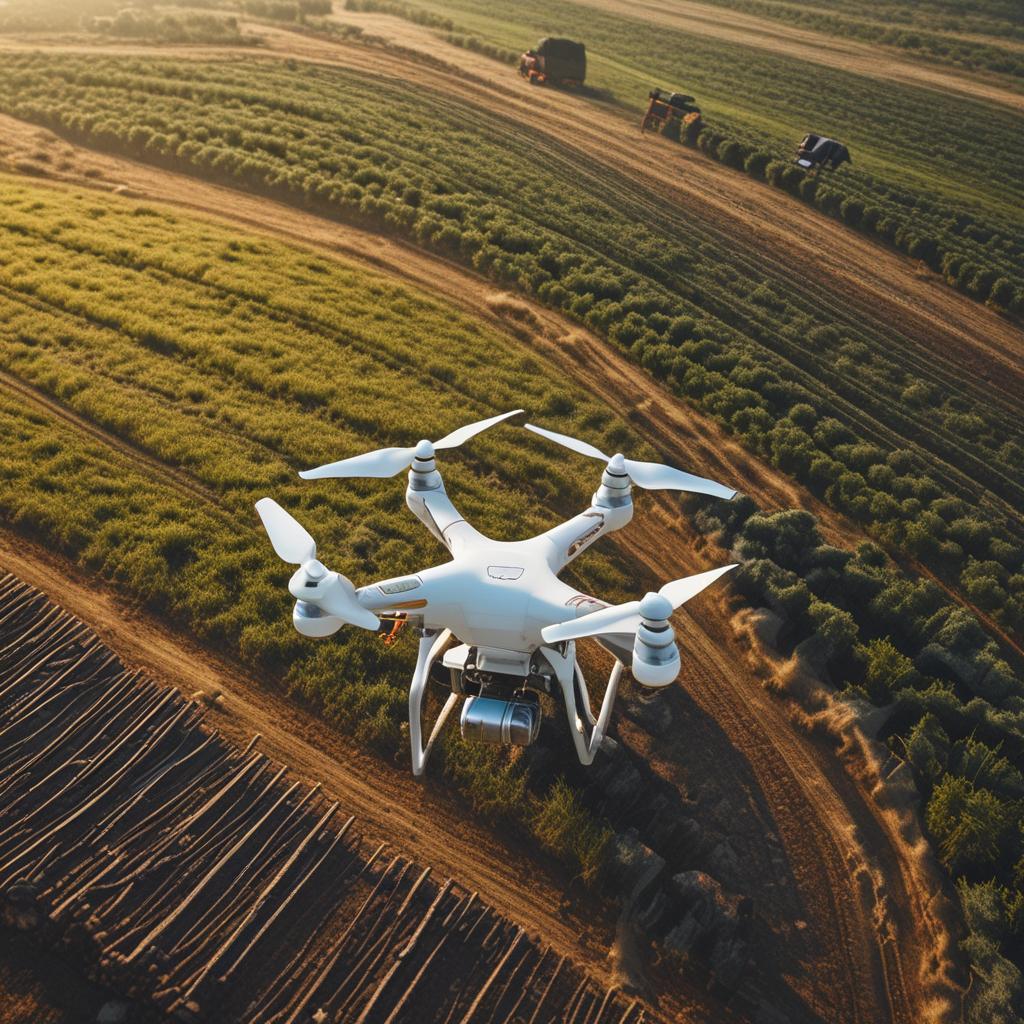The advent of drone technology has revolutionized various sectors, and agriculture is no exception. Drones, also known as unmanned aerial vehicles (UAVs), are increasingly being used in modern farming to enhance efficiency, reduce costs, and provide data-driven insights. These benefits are transforming how farmers monitor crops, manage resources, and make decisions. This blog post will explore the various ways drones are being used in agriculture, their benefits, and the future trends in this technology.
Step-by-Step Process
Field Mapping
Use drones to capture high-resolution aerial images of fields.
Data Analysis
Process images to assess crop health and soil conditions.
Precision Planting
Deploy drones to plant seeds with GPS-guided accuracy.
Crop Monitoring
Regularly monitor growth and detect pests or diseases early.
Targeted Spraying
Apply fertilizers or pesticides precisely using drone technology.
Process infographic for How Are Drones Used in Agriculture
Revolutionizing Crop Monitoring with Drones in Agriculture
Real-Time Data Collection for Crop Health
Drones equipped with high-resolution cameras and sensors can capture detailed images and data about plant vitality. Tools like multispectral and thermal cameras help identify stress, disease, or nutrient deficiencies early on. This allows farmers to take timely action, reducing the risk of crop failure and improving yields.
Mapping and Field Analysis
Drones can create detailed maps of terrain, topography, and irrigation systems. By integrating this data with specialized software, farmers can create actionable field maps that guide planting, irrigation, and harvesting strategies.

Pest and Disease Detection
AI-powered drones can identify infestations or pathogens early, allowing for targeted interventions. For example, drones can detect pests like aphids and armyworms, as well as diseases such as fungal infections. Early detection helps prevent the spread of disease and reduces the need for chemical treatments.
Precision Agriculture: Optimizing Resource Use with Drones
Soil Analysis and Fertility Mapping
Drones can assess soil moisture levels and nutrient content, providing valuable insights for targeted fertilization and soil management. This data helps farmers optimize resource use, reduce waste, and improve crop health.
Variable Rate Application (VRA) of Inputs
Drones enable precise spraying of pesticides, herbicides, and fertilizers, reducing chemical waste and environmental impact. This targeted approach ensures that crops receive exactly what they need, when they need it.
Irrigation Optimization
Drones monitor water usage and detect leaks in irrigation systems, helping farmers conserve water and reduce energy costs. Thermal imaging can also identify drought-stressed crops, allowing for timely intervention.
Aerial Planting and Spraying: Speed and Accuracy
Drone-Assisted Seeding
Drones are being used for planting seeds in hard-to-reach areas or large fields, reducing labor costs and improving efficiency. This technology is particularly useful for conservation tillage and reforestation efforts.
Automated Spraying for Large-Scale Crops
Drone spraying offers several advantages over traditional methods, including reduced labor costs and improved chemical distribution. This technology is especially beneficial for large-scale farming operations.
Livestock Management and Farm Security
Monitoring Animal Health and Behavior
Thermal imaging and GPS drones can track livestock movement and detect illness, helping farmers optimize grazing and prevent overstocking. This technology also enables early intervention, reducing the risk of disease transmission.
Enhancing Farm Security with Surveillance Drones
Drones can detect trespassers, wildlife intrusions, or equipment theft, providing an additional layer of security for farms. 24/7 monitoring and real-time alerts enable farmers to respond quickly to potential threats.
Data-Driven Decision Making in Agriculture
Integrating Drone Data with Farm Management Systems
By combining drone data with AI and software platforms, farmers can gain valuable insights into crop health, growth, and yields. This integrated approach enables data-driven decision making, improving crop management and reducing waste.

Predictive Analytics for Sustainable Farming
Machine learning models can process drone data to predict outcomes, such as crop yields and disease susceptibility. This predictive analytics capability helps farmers make informed decisions, reducing over-fertilization and improving harvest planning.

Challenges and Limitations of Agricultural Drones
Regulatory and Legal Considerations
The use of drones in agriculture is subject to local regulations and laws, including those related to airspace restrictions and pilot certification. Farmers must ensure compliance with these regulations to avoid fines or penalties.
Cost and Accessibility Barriers
The initial investment required for drones and training can be significant, especially for small-scale farmers. However, the long-term benefits and cost savings can outweigh the initial costs.
Technical Limitations
Drones have limitations related to battery life, payload capacity, and weather conditions. Additionally, skilled operators are needed to interpret data effectively, which can be a challenge for some farmers.
Future Trends in Agricultural Drone Technology
Advances in AI integration, swarm drones, and battery improvements will further enhance the capabilities of agricultural drones. Future applications may include automated pollination, harvesting, and crop monitoring.
Conclusion: The Impact of Drones on Agricultural Efficiency
In conclusion, drones are transforming the agricultural sector by providing efficient, cost-effective, and data-driven solutions for crop monitoring, resource management, and decision making. As the technology continues to evolve, it is likely to have an even greater impact on the industry, enabling farmers to produce more with less.
FAQ Section: Answering Common Questions
- How much do agricultural drones cost? The cost of agricultural drones can range from $1,000 for basic models to $10,000+ for advanced systems.
- What types of drones are best for agriculture? Multicopter drones are suitable for detailed mapping, fixed-wing drones for large areas, and hybrid models for versatility.
- Can drones analyze soil data? Yes, drones can analyze soil data using multispectral imaging and sensors to measure moisture, pH, and nutrient levels.
- Are there legal restrictions for using drones in farming? Yes, compliance with local aviation laws, altitude limits, and pilot certification is required.
- How do drones help reduce environmental impact? Drones help minimize chemical overuse, optimize water consumption, and support precision farming, reducing the environmental impact of agricultural practices.
